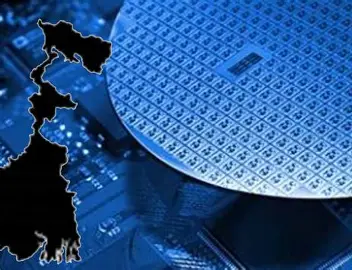
Introduction
India’s ambitions to become a global semiconductor leader received a significant fillip with the recent relaxation of Special Economic Zone (SEZ) rules. The changes by the government, notified in June 2025, are considered a game-changer to attract high-value investments, encourage indigenous production, and integrate India more deeply into global technology supply chains. This article examines the economic, policy, and legal implications of these reforms, how they fit into India’s semiconductor ambitions, and where the remaining challenges are.
The Rationale Behind SEZ Reforms
The Semiconductor Imperative
Semiconductors form the backbone of the smartphone economy, powering smartphones and electric cars. The COVID-19 pandemic showed how India relies on imported chip shortages that have a bearing on core industries and prove the necessity for a robust indigenous supply chain. With supply chains globally reorganizing themselves and with increasing geopolitical tensions, India’s pursuit of semiconductor self-reliance is a strategic and economic imperative.
For any queries or to publish an article or post or advertisement on our platform, do call at +91 6377460764 or email us at contact@legalmaestros.com.
SEZs: The Car of Choice
SEZs have been the main driver of India’s export-driven growth so far, through tax breaks, imports free of duty, and streamlined customs. However, stringent rules, e.g., large minimum land requirement and binding export performance, have been a hindrance to capital-intensive sectors like semiconductors, whose production in the initial stages is for the domestic market.
Key Changes to SEZ Rules
1. Lower Land Requirement
• Rule 5 Amendment: The threshold of land area that must be contiguous land and be utilized by SEZs for production of semiconductor or electronics components has come down from 50 hectares to just 10 hectares.
• Effect: This comes down the entry barrier for investors, enabling more high-value small projects and enabling more companies to set up fabrication units.
2. Eased Encumbrance-Free Land Norms
• Rule 7 Amendment: Board of Approval(BoA) can now exempt the requirement of SEZ land being “encumbrance-free” in case it is mortgaged or leased to the state or central government or to their agencies.
• Effect: This clears a major hurdle in land acquisition, especially in urban and semi-urban areas where clear titles to land are not prevalent.
3. Domestic Sales Allowed
• Rule 18 Amendment: SEZ units of semiconductors and electronics can now supply to the Domestic Tariff Area (DTA) after paying applicable duties, except exports.
• Impact: This flexibility shields the SEZs from global trade volatilities and ensures a steady supply to the domestic market, critical during technology ramp-up.
4. Operational Flexibility
• Amendment of Rule 53: The value of goods imported and exported on free-of-cost terms can be taken into account in determining the Net Foreign Exchange (NFE) using customs rules of valuation.
• Effect: Supply chain logistics are streamlined and transit time is reduced, especially in the case of components and sub-assemblies.
Legal and Judicial Context
While the recent changes have so far not been tested in courts, the legal situation of SEZs has seen in-depth judicial examination in the past. For instance, the Karnataka High Court upheld the government’s right to withdraw chosen tax incentives (e.g., Minimum Alternate Tax and Dividend Distribution Tax) on SEZ units as a matter of legislative power to change fiscal policy and for the need of sunset clauses in tax incentives. This judgment underscores the importance of clear, predictable policy regimes to investor confidence.
Policy Impact: A New Era for Indian Semiconductors
- Global and Domestic Investment Attraction
These reforms have already attracted large investments. Major among these are the clearances to Micron Semiconductor Technology India to set up SEZs in Gujarat and Aequs Group in Karnataka, together amounting to a combined ₹13,000 crore plus. The Ministry of Electronics and Information Technology (MeitY) has indicated increased interest from overseas chipmakers, a sign that India is rising as a challenger hub in the global semiconductor value chain.
- Increasing Domestic Capabilities
By promoting local sales and reducing regulatory hurdles, the new regulations enable development of a healthy indigenous ecosystem for chip designing, manufacturing, and testing. This is imperative in India’s intentions under “Make in India” and “Digital India” programs and in curbing import dependence.
- Enhancing Export Competitiveness
Amendments also enable India to take advantage of fresh supply chain reconfigurations elsewhere in the world, particularly as firms seek alternatives to China. By facilitating operation and reducing entry barriers, SEZs are able to increase high-technology exports and make India a more solid member of global value chains.
Challenges and the Way Forward
Even after the progress, there are several challenges which needs to be addressed:
• Infrastructure Lapses: Power, water, and logistics are required for making chips but remain lopsided in the majority of places.
• Skill Shortage: Chip design and fabrication talent is in demand.
• Policy Coordination: Co-ordination of central and state governments, amongst others, in terms of single-window clearances is a prerequisite for clearance of the projects.
• Environmental Concerns: The manufacturing of semiconductors is energy- and capital-intensive and needs environmentally sustainable methods and climate-resilient facilities.
Conclusion
Relaxation of SEZ norms is a daring move towards making India the world’s next semiconductor powerhouse. By unblocking regulatory bottlenecks and disconnects between industry and policy, the government has given the investor and technology industry leaders worldwide a pointed message. The success of the reforms, however, would depend on sustained policy commitment, infrastructure development, and a focus that balances economic development with social and environmental concerns.
India’s chip aspirations are no longer aspirations—but plans. India has the potential to be one of the major players in the chip economy with the right mix of regulatory ease, investment, and innovation.
Sources
- ‘SEZ Rules relaxed: A shot in the arm for India’s semiconductor ambitions?’ (Economic Times, 6 May 2024)





